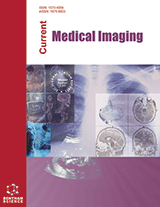
Abstract
Background: Pineal region solitary fibrous tumors (SFT) incorporate a histologic spectrum of rarely metastasizing mesenchymal neoplasms that include tumors formerly classified as hemangiopericytoma.
Case Report: Here, we describe a rare case of SFT of the pineal region in a 25-year-old man with a literature review. After the first surgery, the tumor reappeared as a local low-grade recurrence, followed by metastasis to the right parietal lobe, and then hyperacute intraparenchymal hematoma at the metastatic site, and later presentation of widespread intracranial intra-axial and extra-axial metastases during the follow-up period. Systemic metastases were not detected. The histopathological evaluation of the resected tissues confirmed the malignant progression of the tumor.
Conclusion: The diagnosis of SFT of the pineal region through clinical and imaging features can be considerably challenging. Large size, intratumoral cystic areas, and intense contrast enhancement are the main conventional imaging characteristics of the tumor. Surgery is the first preferential treatment. All recurrent or metastatic cases were grade II or grade III tumors. Adjuvant radiotherapy should be added to surgical treatment in high-grade tumors. Gamma knife radiosurgery is a treatment option for intracranial metastases.
Keywords: Pineal region, hemangiopericytoma, solitary fibrous tumor, magnetic resonance imaging, treatment, oncology, radiotherapy, surgery.
[http://dx.doi.org/10.1097/00000658-194207000-00004] [PMID: 17858068]
[http://dx.doi.org/10.1111/his.12267] [PMID: 24164390]
[http://dx.doi.org/10.1007/s00401-013-1117-6] [PMID: 23575898]
[http://dx.doi.org/10.1007/s00401-016-1545-1] [PMID: 27157931]
[http://dx.doi.org/10.1093/neuonc/noab106] [PMID: 34185076]
[http://dx.doi.org/10.1007/s11060-018-2787-7] [PMID: 29427152]
[http://dx.doi.org/10.1177/1066896915627485] [PMID: 26811389]
[http://dx.doi.org/10.1093/ajcp/106.2.217] [PMID: 8712177]
[http://dx.doi.org/10.1016/j.wneu.2016.12.057] [PMID: 28017751]
[http://dx.doi.org/10.1097/PAP.0000000000000103] [PMID: 26849816]
[http://dx.doi.org/10.1136/jnnp.32.5.445] [PMID: 5360052]
[http://dx.doi.org/10.1016/0090-3019(83)90421-4] [PMID: 6845148]
[http://dx.doi.org/10.1159/000115742] [PMID: 6489389]
[http://dx.doi.org/10.1007/s002340050347] [PMID: 8957805]
[http://dx.doi.org/10.1111/j.1440-1789.2009.01064.x] [PMID: 19845865]
[http://dx.doi.org/10.1016/j.jocn.2010.01.022] [PMID: 20598546]
[PMID: 21427668]
[http://dx.doi.org/10.1111/j.1440-1789.2012.01347.x] [PMID: 22978513]
[http://dx.doi.org/10.4103/0028-3886.141277] [PMID: 25237967]
[PMID: 25031774]
[http://dx.doi.org/10.1111/bpa.12578] [PMID: 29265634]
[http://dx.doi.org/10.1097/MD.0000000000015737] [PMID: 31124953]
[PMID: 34306324]
[http://dx.doi.org/10.1186/s13000-021-01095-2] [PMID: 33879215]
[http://dx.doi.org/10.4103/0028-3886.241365] [PMID: 30233017]
[http://dx.doi.org/10.1038/modpathol.2017.54] [PMID: 28731041]
[http://dx.doi.org/10.1007/s00234-019-02307-9] [PMID: 31673748]
[http://dx.doi.org/10.3892/or.2012.1919] [PMID: 22824994]
 25
25 2
2











